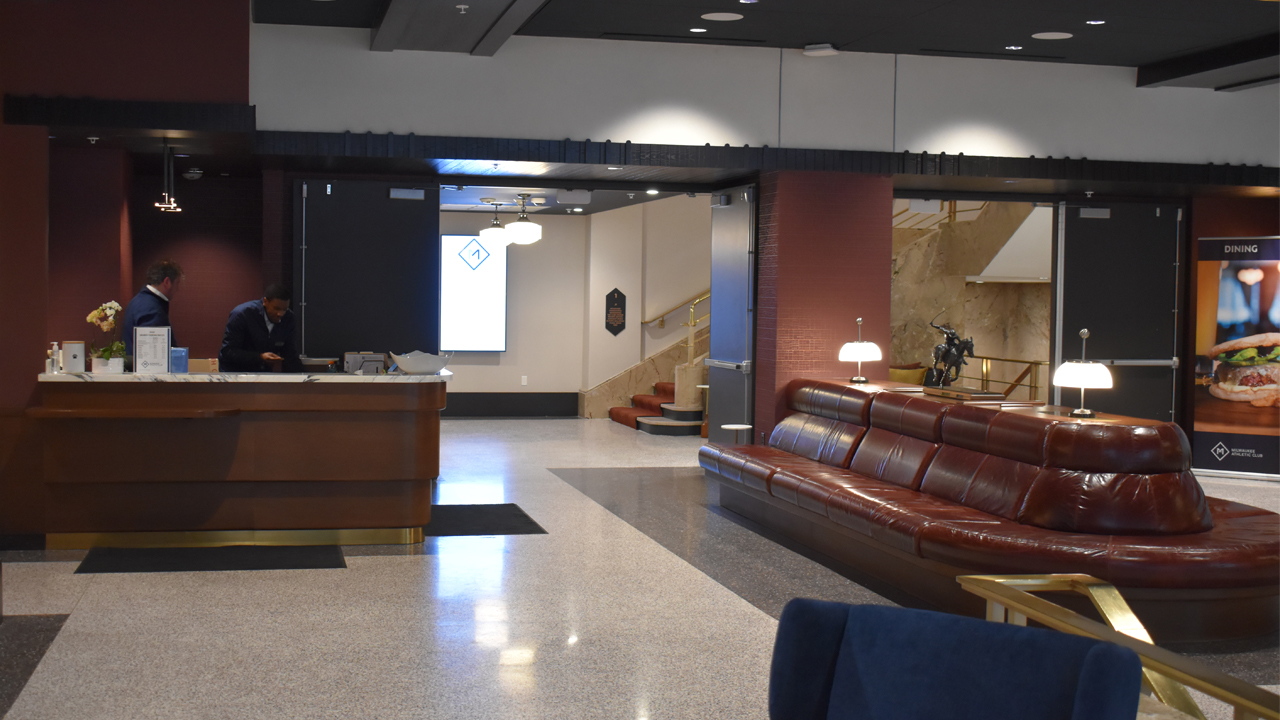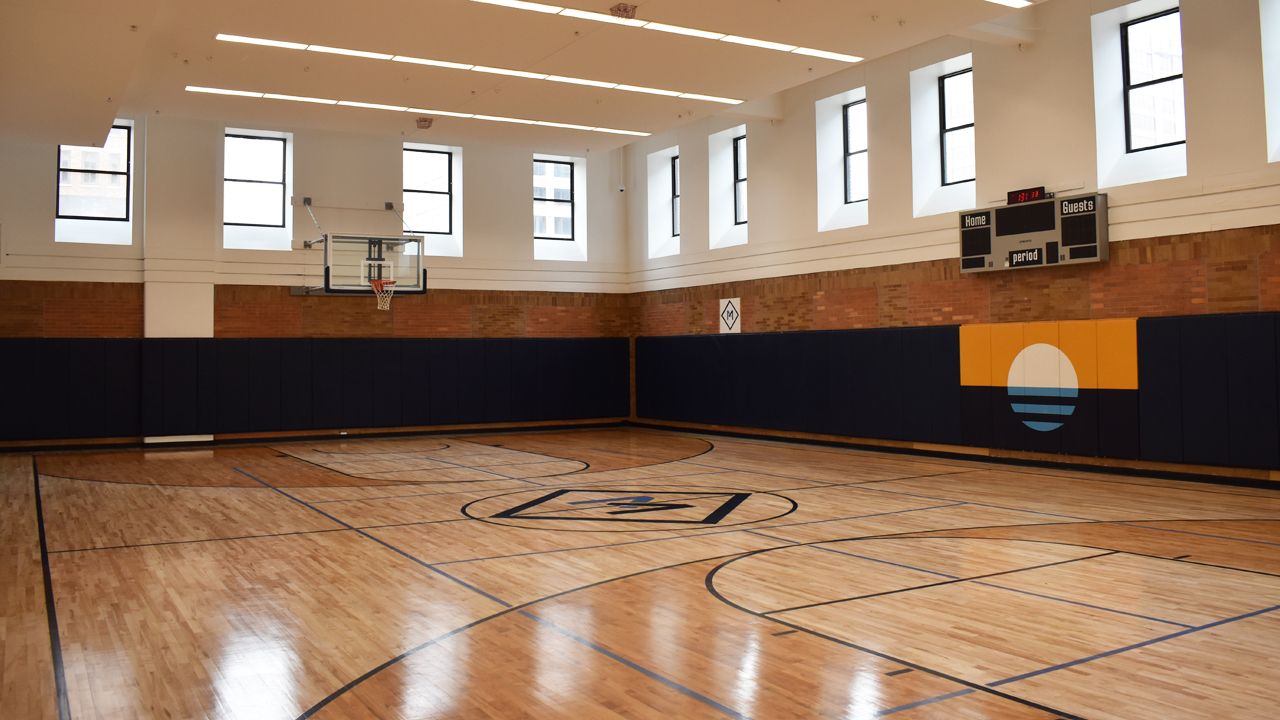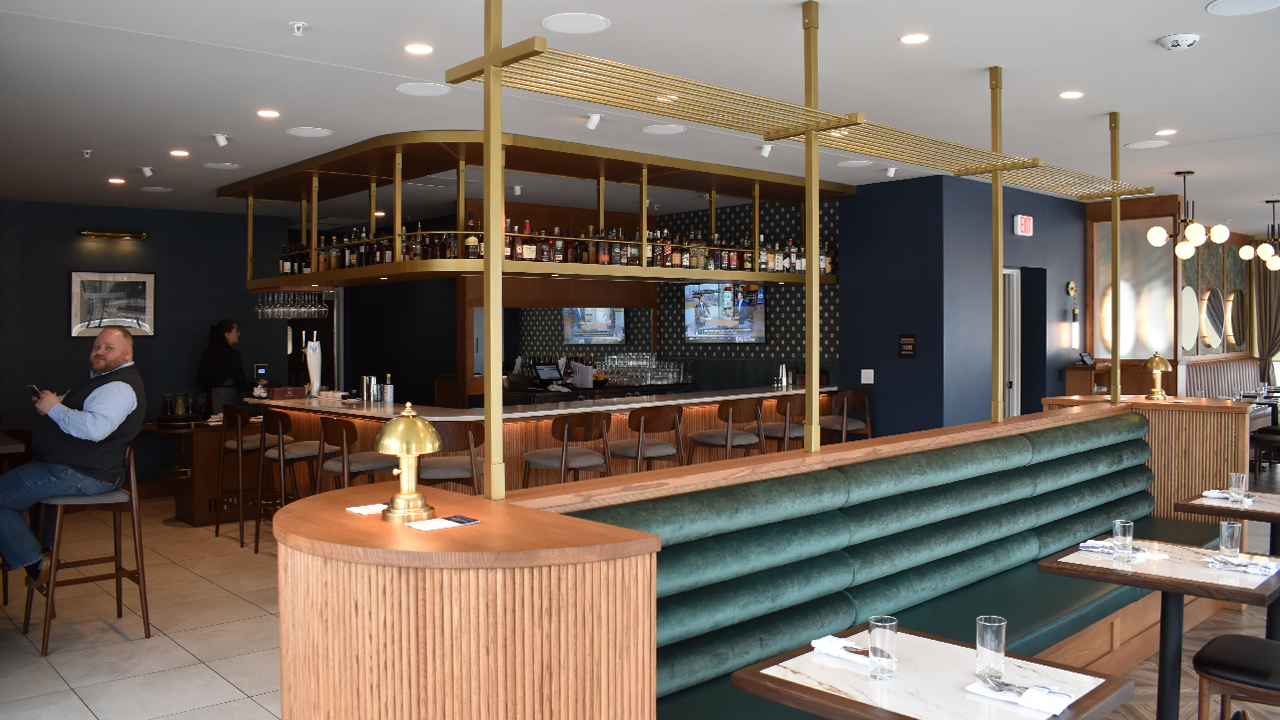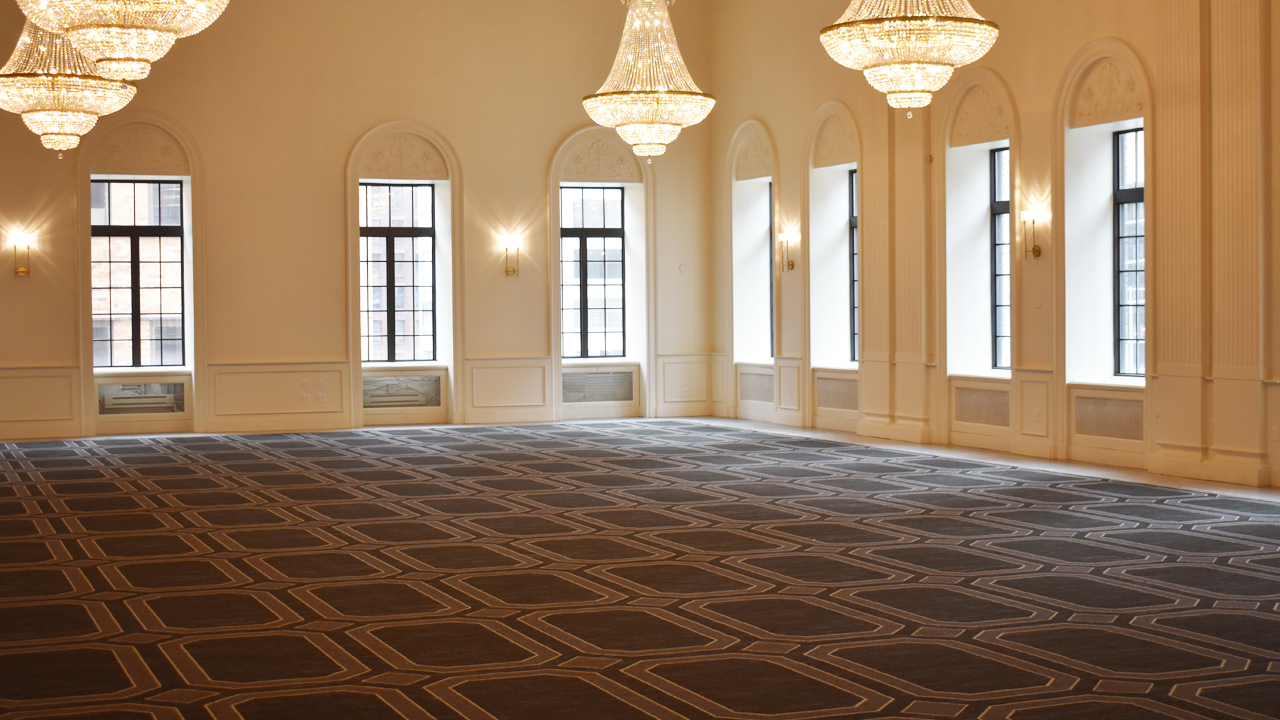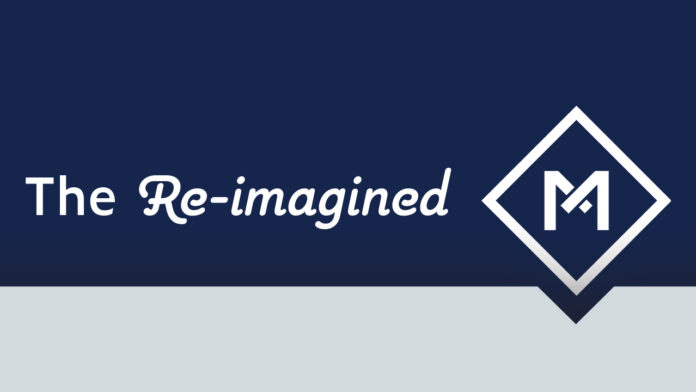
Address: 758 N. Broadway, Milwaukee
Phone Number: 414-273-5080
Email: membership@macwi.org
Developers: J. Jeffers & Co. & Interstate Development Partners
Website: www.themacwi.com
In April 2022, members of the Milwaukee Athletic Club and the Milwaukee community celebrated the completion and grand re-opening of a $62 million historic renovation project that restored the Milwaukee Athletic Club to its former glory with the addition of some modern, state-of-the-art improvements.
Josh Jeffers, founder and chief executive officer of Milwaukee-based J. Jeffers & Co. and Tony Janowiec, founder and chief executive officer of Milwaukee-based Interstate Development Partners embarked on the journey over four years ago.
Despite several challenges, including the devastating COVID-19 pandemic, the pair and their supporters, never wavered.
BizTimes Milwaukee: Can you discuss the components of the Milwaukee Athletic Club renovation?
Josh Jeffers: “It was a total gut rehabilitation, a top to bottom renovation of a building that was built in 1917, with amazing thoughtfulness put into the aesthetics and the culture of the urban downtown Milwaukee business community. Unlike almost every other project we take on, this building has been continuously occupied since its inception. We needed to replace all the mechanical, electrical, and plumbing infrastructure throughout the entire building and bring everything up to present-day code compliance. The only way to accomplish this level of retrofit was to demolish everything and take it all down to the original frame. So, in addition to the external features and best-in-class amenities, a lot of the work that was done was also done behind the walls.”
What new features are available for patrons?
Tony Janowiec: “We came into this knowing that the rehabilitation work was one slice of the pie. We did our research, not only the historical background research, but also (and early on), we knew that in order to honor this building and have it meet the demands of today’s members, tenants, guests and event goers, we would have to find the balance between what seems like a juxtaposition: an historical property with deep meaning to the City of Milwaukee and a technologically advanced social club that attracts people of all ages. And so, we began to tour social athletic clubs across the country to educate ourselves on this niche industry. The goal was always to create Milwaukee’s best private club experience. A key takeaway from the research was that the member experience is built around experiential interactions.
Jeffers: “Adding to Tony’s remark on ‘experiential interactions’ we embrace the fact that today, metro Milwaukee social clubs work a lot differently now than they used to… the world has changed in 105 years. The (former) club had outgrown the business model’s usefulness and the building itself had aged to the end of its useful life. The Milwaukee Athletic Club is restored and on top of the history, we’ve added contemporary technology for energy conservation, important security systems, co-working spaces, a chic rooftop bar, an outdoor rooftop area… and so much more. Today this social club is just that; the “social place to be.” It is a daily destination for health, activities, entertainment, for family and for a very fortunate few tenants, an amazing place to live.
The finished Club features 54 apartment units, best in class fitness facilities, a new coed swimming pool and recreation area, golf swing suites, a dedicated co-working space with a café, billiards and shuffleboard. A major feature that has already become a huge success is the rooftop bar and dining experience that seats 180 people with outdoor entertaining areas. Through-out this entire project, what we’ve tried to do is incorporate the physical building features and amenities that are required to deliver a modernized social club experience.”
What was it that struck you about this property and why was it important for you to take on this restoration?
Janowiec: “We were members and could see the club had a building that was failing and a business model that was outdated. We also witnessed a highly positive, very resilient and engaged membership base. We couldn’t help ourselves and we suggested a solution. From the first time we began to put our ideas forward, knowing it may seem to be a kind of a crazy idea, but it had to be done. I remember talking to Josh and him saying something like, ‘Yeah, (it might be crazy), but it could save the MAC. How do we go to sleep at night knowing we could have done something if it ends up failing?’ One thing led to another, and with the strong will and determination of the MAC’s Board President, David Kriete, we had a project.”
What challenges did you encounter getting this project over the finish line?
Janowiec: “I think one thing that sort of surprised us was the diversion from a hotel centric project to one that included multi-family. We thought our original plan was a slam dunk. What we learned was that institutional lenders viewed this project differently than Josh and I did from a risk perspective. Then the pandemic hit, and we had no idea what was going to happen to our capital sources. There are a lot of achievements in this project but one of the miracle achievements I’d say is that we found a way to work with our original capital partners so they could sensibly still support a $62 million investment in a social club in the era of social distancing. There’s no real reason why that happened but that is exactly what occurred. This is the passion this community has for the property and for the Milwaukee Athletic Club then and now. Indeed, it was a real challenge. We’re proud of the fact that while our original closing got derailed, we closed in November 2020 with the exact same capital partners. We were completely blindsided by COVID, and it really blew up our original deal, but we spent the next eight months picking up the pieces and putting them back together and getting our original partners to believe in this new plan.”
What kept you going? What lessons did you learn from this project?
Jeffers: “There were probably 10,000 points during this project where I think a more traditional developer would have given up. I think for us, it was really the relentless drive to see that vision realized and getting the Milwaukee Athletic Club back up again. In addition, this project is literally in the heart of downtown Milwaukee, and deep in the heart of many Milwaukeeans. There was a lot of bobbing and weaving and adapting to avoid some (perceived) asteroids; some were really small and some, like the pandemic, were not. A true business lesson learned, or rather a lesson reaffirmed, is the importance of communication and gaining buy-in from a larger constituency on a development project. In the case of the MAC, there were many smaller challenges and also some very huge hurdles that we overcame because we had a determined team; a team rowing in the same direction. A team focused on the realization of this project in metro Milwaukee as you see it completed today. As for J. Jeffers & Co., until now, we had no single project with so many stakeholders – not even close. So many people, truly talented, dedicated, and impassioned people that joined the team for the whole journey, this is what made the difference.”
Let’s talk about the partners you worked with on this project. Who are they and what was working with them on this project like?
Janowiec: In reality, it took a village. We had so many great people that helped push this forward during an extremely difficult time. In addition to our working partners we had dedicated MAC members, many of whom are of multi-generational MAC member families, and really involved people like David Kriete who literally willed this to happen and inspired us to keep going. Ted Kellner, Pat English, Paul Stewart, Paul Sweeney and so many others who were always a phone call away mornings, nights, or weekends. We had partners who are the best and brightest and most successful leaders in the community advising us along the way.”
Jeffers: “Our investors normally are limited partner investors who make a capital contribution and then wait for us to send them quarterly reports. In this case we had the benefit of some of the most experienced businesspeople in the Milwaukee area as a sounding board for us and it was incredibly valuable to bringing this project to fruition. With the changes to the project, our construction team partners evolved along the way as well. Our original partners, the ones that were with us the entire way, included Kahler Slater and GRAEF USA. Our Capital partners included, Ardent, Twain Financial, U.S. Bank National Association, and Cedar Rapids Bank & Trust. ECS Midwest, LLC did the consulting for the project. Hays Companies, Inc., brokered our insurance which was provided by CNA Insurance. After changing general contractors a few times, CG Schmidt Inc., got involved in late 2019 and immediately spurred into action and completed the project on-time in an astonishing 11-month construction timeframe. To build three custom spaces in the building, including the elaborate rooftop restaurant, the historic rehab of the famed Elephant Room and our new coworking lounge, we turned over those spaces to Three Sixty who custom designed, fabricated and constructed them on a turnkey basis in less than six months. Our contractor selected a strong team of sub-contractors and suppliers including Acoustech Supply, Inc., Arbon Equipment Corp., Badger Swimpools, Inc., Baseman Bros, Inc., Berglund Construction, Blair Fire Protection, Butters Fetting Company, Carroll Seating Company, Inc., Common Links Construction, LLC, Core Tech, Construction Supply & Erection, Inc., Drexel Building Supply Inc., Geis Building Products, Inc., Hetzel Tile & Marble, Inc., Horner Plumbing Company, Inc., Klein Dickert Milwaukee, Inc., L&A Crystal, Langer Roofing & Sheet Metal, Inc., Munson, Inc., Next Electric, LLC, Performance Contracting, Inc., Regency Janitorial Service, Inc., Rockford Central Tile and Terrazzo Company, Schindler Elevator Corporation, Spray Insulations, Inc., Stuart Dean Co., Inc., Timothy J. McGuire, Veit & Company, Inc., and Integrity Environmental services, Inc. These companies all worked diligently through COVID, supply chain challenges, and workforce shortages to complete the project on time. They all took on an enormous amount of risk and collaborated with us as we were redesigning the project while building was already underway. We can’t thank our partners enough.”
What does the completion of this renovation mean for the community?
Janowiec: “I don’t think any of us really understood the demand for this very diverse but exclusive society in the city of Milwaukee. That, to me, was the daily motivation. We knew we had to deliver this because if we didn’t the experiences, the connections, the interactions, the memories, wouldn’t have a place to happen. There is nothing that offers the interactions the MAC does for this community. The community needs this space. The MAC from a use perspective stands the test of time. It’s the one that keeps going and that’s because of the people. Now that can continue.”
What is your vision for the future of this building/this space?
Jeffers: “The gala was a really great opportunity to step back and appreciate the finished product but also an opportunity to be amazed by the amazement of others. Tony and I have been so laser-focused on all the little details that I think it really gave us an opportunity to walk through and break in the building with 600 of our closest friends. In doing so, we were able to see there’s potential to improve upon some things in the future as the club grows and evolves. Right now, we’re trying to figure out what the max membership of the Club should be. It’s designed to accommodate a true number of members. There’s room for expansion including more golf swing suites and a 6,000 square foot white-box space on the ground floor for a future restaurant. As amazing as it all is, there is still so much more we can do.”
Janowiec: “I agree, there’s potential for growth opportunities. Right now, we’re looking at whether that (white-box space) could be a third-party tenant or developed internally. We anticipate growth. Between Josh and I we own the north half of this block all the way to Wells Street too, so that’s an interesting development block to consider. For future uses, we control that. We’ve already started concepting what we might do to the north half of that block. We see a lot of potential.”



